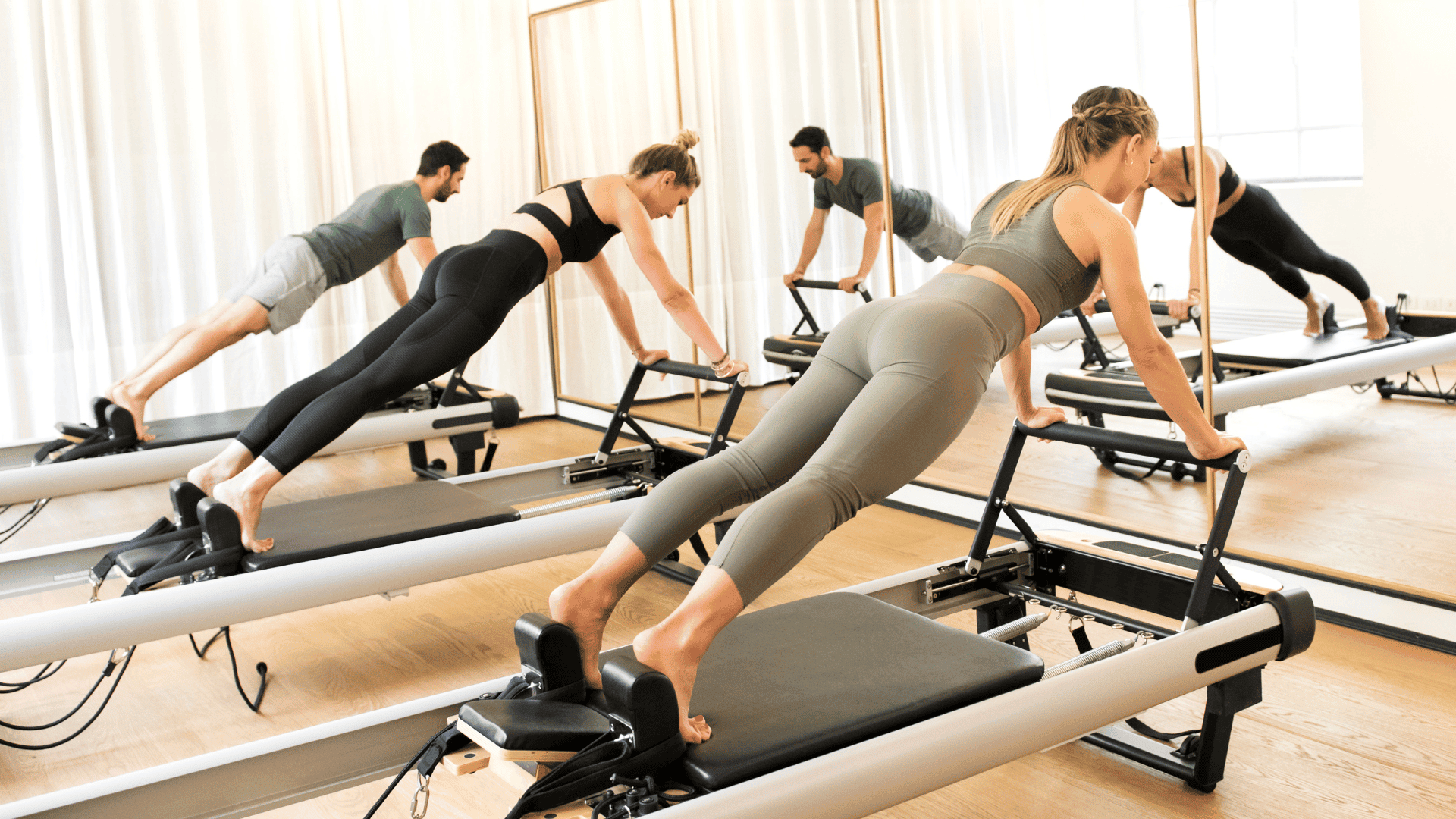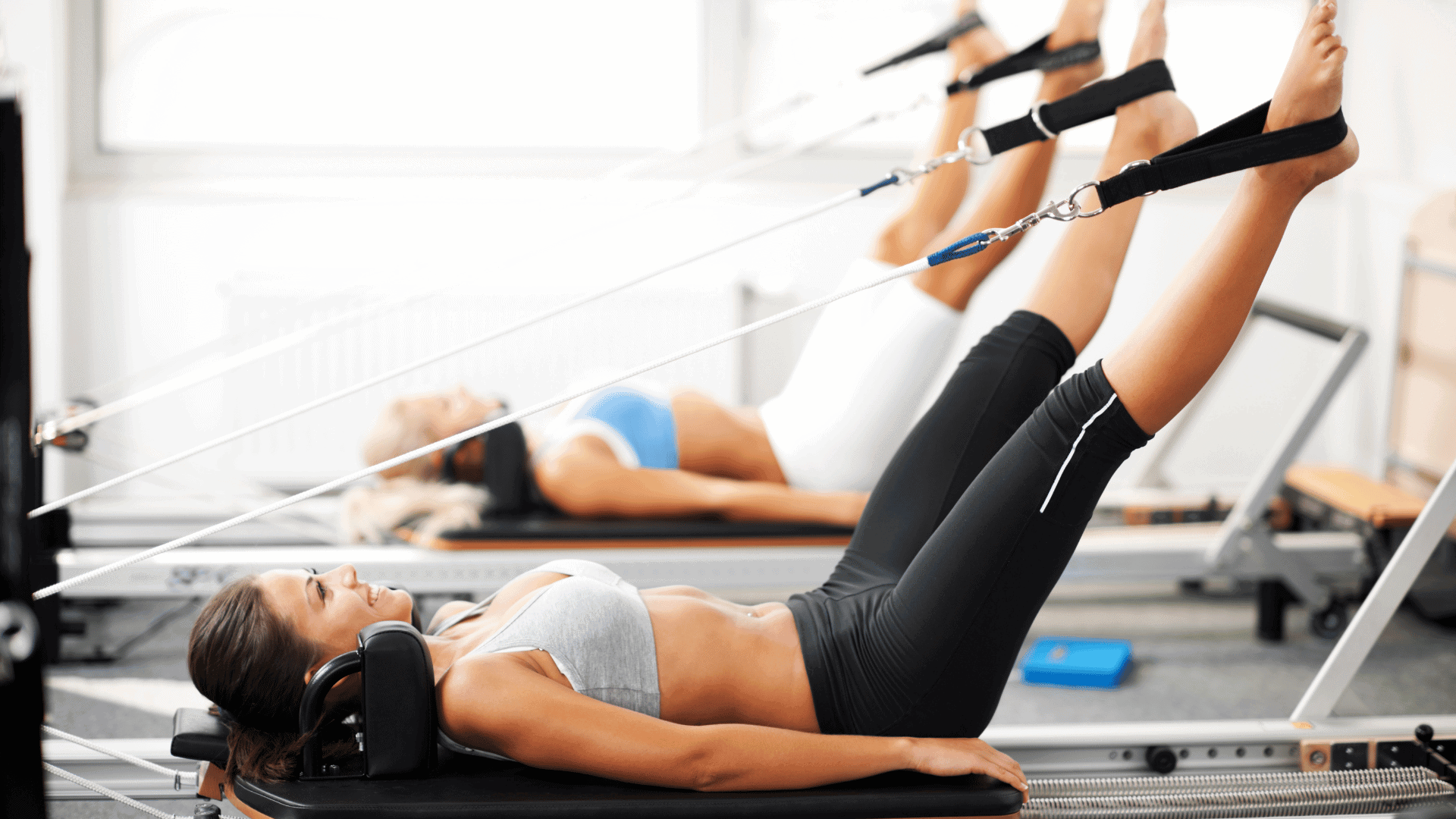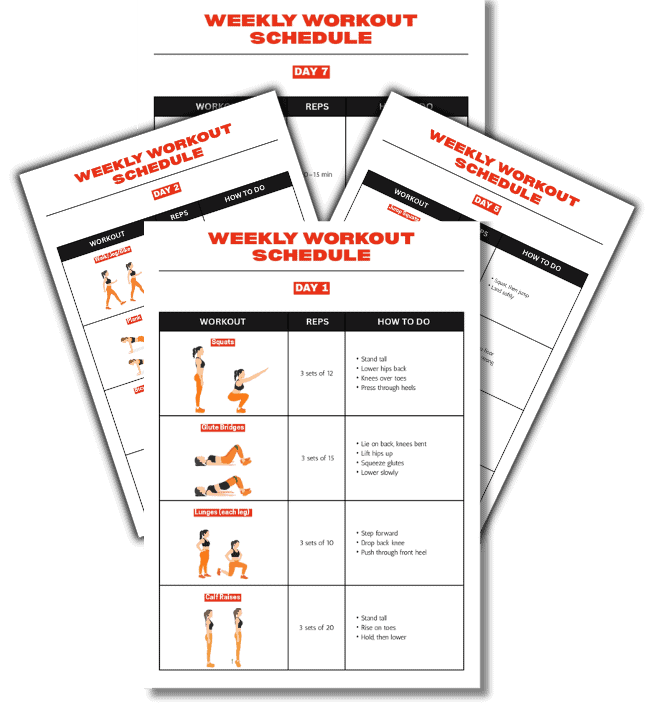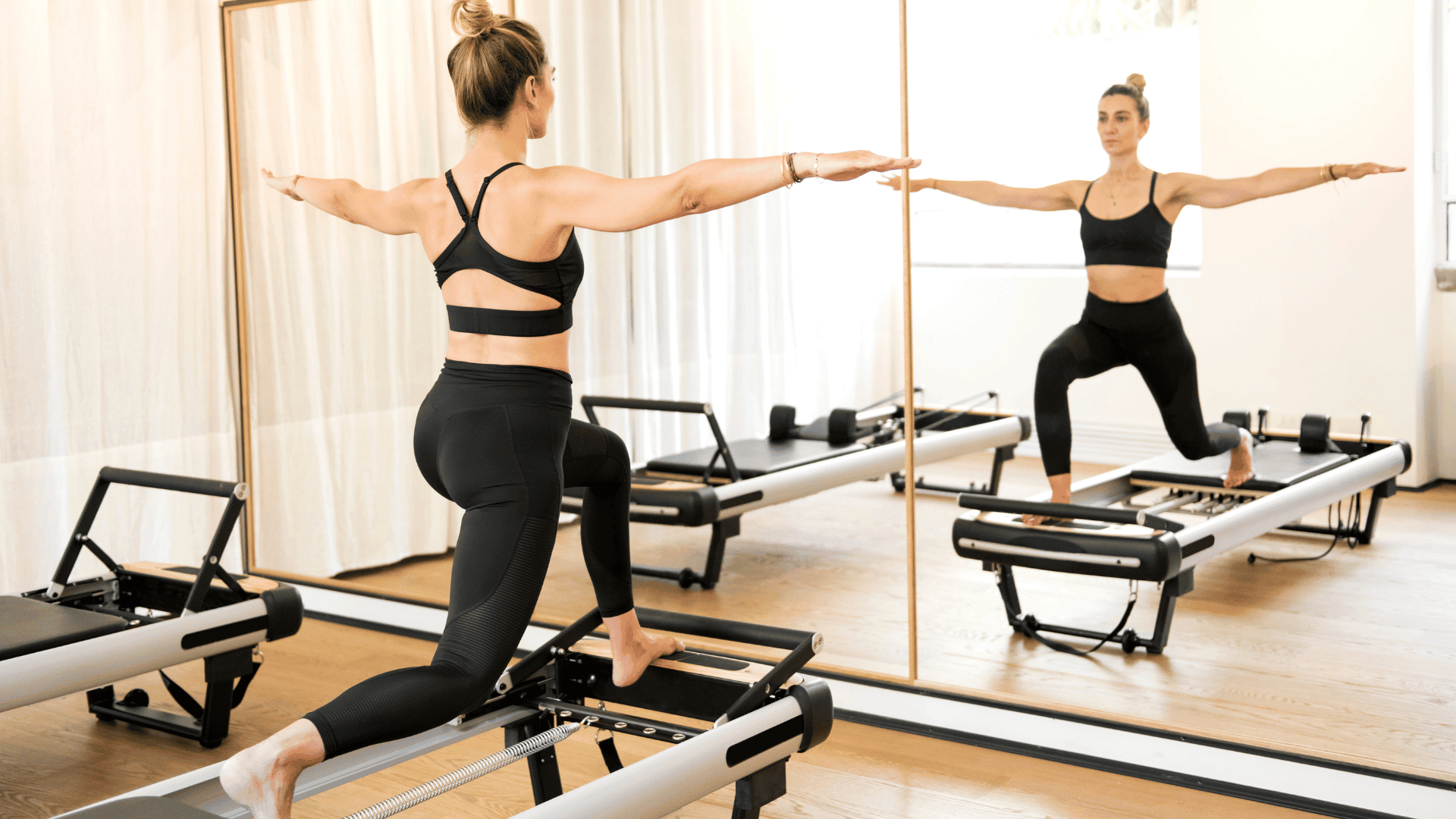Have you ever wondered if there’s a workout that’s low-impact but still helps you get stronger and more flexible?
Pilates could be just what you need. It’s designed for anyone who wants a routine that feels gentle on the body, but actually gets results you can see and feel.
No wild moves or endless gym sessions required, just smooth, controlled exercises that help you move better every day.
Pilates is also super flexible, so you can do a session in your living room, at the gym, or anywhere you find a little space. Whether you have just 10 minutes or want to stretch it out for longer, there’s always a way to make Pilates fit your schedule.
In this article, you’ll find easy tips and a clear, beginner-friendly Pilates workout plan. You’ll learn how to build your own routine, stay motivated, and see real progress no matter where you’re starting from.
Curious to try? Let’s get started and see what Pilates can do for you.
What Makes Pilates a Great Workout Plan for Beginners?

Starting a new workout can feel overwhelming, but Pilates makes it simple. This style of exercise is all about slow, controlled movements that target your core. (the muscles around your belly, back, and hips)
And instead of jumping or running, you move with purpose, building strength, flexibility, and better balance at your own pace.
One of the best things about Pilates is how it fits into everyday life. Whether you sit at a desk, chase after kids, or just want to move with less stiffness, Pilates helps you stand taller and move more easily.
The routines help tone your muscles so your body feels longer and leaner, not bulky. Plus, the focus on breathing and control can help calm your mind after a long day.
Even better, Pilates is perfect for beginners because you don’t need any fancy equipment or a gym membership. All you need is a little floor space and a soft mat. The low-impact moves are gentle on your joints, making it a safe pick if you’re new to exercise or coming back after a break.
In just a few sessions, you might notice more energy, less tightness, and better posture—without feeling wiped out or worn down.
So, if you’re looking for a routine that’s gentle but actually gets results, Pilates is an easy choice to help you get started and stick with it.
How to Build Your Pilates Workout Plan

Starting a new workout plan can feel tricky, but Pilates is easy to make your own. Before you jump in, think about how much time you have and what you want to get out of it. The great thing about Pilates is that you don’t need a ton of equipment, space, or even experience to get started.
For most beginners, doing simple Pilates two to four times a week is the sweet spot.
This schedule helps your muscles get stronger and more flexible, while giving your body time to rest between sessions. You don’t need to work out every single day, what matters most is showing up regularly.
(Consistency wins over all-out effort.)
As for how long each workout should be, anywhere from 20 to 45 minutes works well.
Short on time? Even 20 minutes of focused moves can help you see progress. Got more time or want a longer stretch session? Go for it, just listen to your body and stop if you feel too tired.
When it comes to equipment, all you need is a good mat to protect your joints and keep you comfortable. If you feel like switching things up, try adding a resistance band or a small Pilates ball, but these are totally optional.
Simple is often best, especially when you’re just getting started.
Finally, keep your goals clear but easy to reach. Maybe you start with two sessions a week, or you set a goal to hold a plank for a few seconds longer each time.
By building a plan that fits your schedule and celebrating each step, you’ll find it much easier to stick with Pilates and enjoy the changes you feel.
Sample Weekly Pilates Workout Plan for Beginners

\Starting something new is easier when you have a clear plan to follow. Below is a simple 3-4 day weekly schedule that balances strength, flexibility, and rest. Feel free to adjust the days or add an extra session if you’re feeling good.
The key is to keep it fun and doable. (always)
| Day | Focus | What to Do |
| Day 1 | Core and Posture Focus | Exercises that strengthen your belly, back, and improve posture |
| Day 2 | Full Body Pilates Flow | Smooth moves that work your whole body for strength and flexibility |
| Day 3 | Stretch & Flexibility Emphasis | Gentle stretches to open hips, back, and shoulders |
| Optional Day 4 | Low Impact Cardio + Pilates Mix | Light cardio like walking or dancing, plus a short Pilates session |
Remember, your energy might change day to day. It’s okay to slow down or skip a workout sometimes.
The most important thing is to keep showing up and enjoy the process.
Key Pilates Exercises to Include
To get the most from Pilates, it helps to know a few basic moves. These exercises are beginner-friendly and work your muscles in smart ways.
Plus, they help you build strength, tone your body, and improve your flexibility, all at the same time.
The Hundred
This classic move wakes up your core and gets your blood flowing. You lie on your back and pump your arms up and down while holding your legs off the floor. It’s a great way to build endurance in your belly muscles and get your breathing steady.
Roll-Up
Think of this as a slow, controlled sit-up. You lie down, then roll up vertebra by vertebra until you’re sitting tall. This stretch strengthens your abs and loosens your spine, two wins in one move.
Leg Circles
Lie on your back and lift one leg straight up. Then make slow, small circles with your leg. This move helps tone your hips and thighs while improving your hip joint’s flexibility. Keep your core tight so your lower back stays safe.
Spine Stretch

Sit tall with your legs straight out. Slowly reach forward over your legs, keeping your back long and your shoulders relaxed. This stretch feels like a mini massage for your spine and helps lengthen your hamstrings.
Side Kick Series

Lie on your side and lift your top leg up and down or forward and back with control. This series tones your hips and outer thighs, while your core works to keep your balance. Bonus: it helps sculpt your legs too.
Form and Breathing Tips

With Pilates, form is everything. Move slowly and with control. Don’t rush. Breathe deeply, usually in through your nose and out through your mouth. Good breathing helps your muscles relax and makes each move more effective.
4 Tips to Stay Inspired and Consistent
Sticking with Pilates can be easier than you think, especially when you make it fun and fit it into your life.
Here are some great tips to keep you inspired and moving, even on days when the couch looks way more tempting.
1. Make Pilates Fun
Music is a game-changer. Put on your favorite playlist, some upbeat tunes, or even calming sounds, whatever makes you want to move.
Also, create a cozy, inviting workout space. Roll out your mat in a sunny spot or near a window. When your space feels nice and comfy, you’ll look forward to your Pilates time instead of dreading it.
2. Track Progress Without Stress
Tracking doesn’t have to be a chore.
Try taking a photo every two weeks to see how your posture improves or how your moves get smoother. You can also jot down a few lines about how you feel after each workout, more energy, less tightness, or better mood.
These reminders show you’re moving forward without the pressure of perfect numbers or fancy apps.
3. Mix It Up

Pilates is great, but mixing in other activities keeps things fresh.
On your rest days, try a light walk, some yoga stretches, or gentle strength training. Switching it up helps your body stay flexible and your mind stay interested.
Plus, it can prevent workout boredom, because let’s be honest, variety is the spice of fitness life.
4. Celebrate Small Wins
Every time you hold a plank a little longer or feel less tight after stretching, that’s a win worth celebrating. Give yourself a little cheer, a fist bump, or even a happy dance.
Remember, fitness is a journey, not a race. Showing up, moving your body, and feeling good are the real trophies.
Ready to Start Your Pilates Journey?
Pilates doesn’t have to be complicated or time-consuming. With a simple, flexible plan, you can build strength, improve flexibility, and feel better every day. Remember, it’s not about being perfect, it’s about moving your body in a way that fits your life.
Try the workout plan, tweak it to match your schedule and energy, and make it your own. Whether you have 10 minutes or 40, every little bit counts.
And hey, I’d love to hear how Pilates is working for you! Got questions or want to share your progress?
Drop a comment or reach out anytime. Your journey might just inspire someone else to get moving, too.
Keep Your Pilates Journey on Track

Building strength and balance with Pilates doesn’t need to feel complicated.
With the right structure, you can fit it into your week and actually see steady progress, even on your busiest days.
The Free Weekly Workout Schedule is designed to give you a simple framework you can rely on.
It shows you exactly how to keep moving forward without second-guessing, so you can enjoy your practice and build results you’ll notice.
Frequently Asked Questions (FAQ)
1. Is Pilates hard for beginners?
Not at all. Pilates is designed to work at your own pace. You start with simple moves and build up as you get stronger. No fancy skills or flexibility needed from day one.
2. Do I need to be flexible or fit already?
Nope! Pilates actually helps you become more flexible and stronger over time. You don’t have to be super fit or bendy to begin.
3. Can Pilates help with weight loss or muscle toning?
Yes. Pilates tones your muscles and improves posture, which can make you look leaner. It’s not a fast fat-burner like cardio, but it’s great for shaping your body and feeling stronger.
4. What should I do if I miss a workout day?
Don’t stress. Life happens! Just get back to your plan when you can. Consistency over time matters more than being perfect every single day.
5. How soon will I see results with Pilates?
Most people start feeling stronger and more flexible within a few weeks. Real changes take time, but sticking with it will pay off. The key is to keep moving, even if it’s just a little bit each day.










